- Cuisine
- Savour
- François Simon
- Parisian gastronomy: deliciously paradoxical
Parisian gastronomy: deliciously paradoxical
The French capital’s restaurants are revered across the globe. Here, a renowned food critic offers his interpretation of why the City of Light continues to exert such a profound influence over the culinary world, paying tribute to eight luminary chefs.

The French capital’s restaurants are revered across the globe. Here, a renowned food critic offers his interpretation of why the City of Light continues to exert such a profound influence over the culinary world, paying tribute to eight luminary chefs.
JUST WHAT IS IT ABOUT PARISIAN GASTRONOMY THAT MAKES IT SO IRRESISTIBLE?
Because it is indecipherable, infuriating and faithful. At first, indecipherable, because it swerves right, then left, is forgotten, then revived. Then infuriating, because it spends its time contradicting itself, championing contemporaneity, then tossing it aside. It’s a weathervane that extols ingredients, enslaves them, contorts and reduces them to froth, purée, strands. Faithful, too, because it cannot help but look to its past, albeit idealized, even reinvented–Grandma’s beloved recipes hauled back into service for the simple purpose of reinterpreting stuffed tomatoes and roast chicken. Faithful to its very foundations–and that’s to be admired. For here lies the ambivalence from which it derives its elegance: it need not commit patricide or matricide to exist. What makes Parisian cuisine so loveable is its very attachment to its roots, its origins. It’s still in love with the techniques of yesteryear, the flambées, the decanting. The very act of placing cup upon saucer is part of an age-old sacrament: pinching it, just so, between the fingers, putting it down with aeronautical precision. Such ritualistic devotion is what makes a Parisian restaurant unlike any other– and revered the world over.

Maison Rostang
Maison Rostang: to thine own self be true
The ambiance of Michel Rostang’s restaurant, established in 1978, never changes: the woodwork, the hushed soundscape of weighty murmurs and musical tinkling, the deferential service recalling an era when cuisine was utterly unhurried. This is undoubtedly what people come to experience at this two- Michelin-starred restaurant. It’s true that the name has changed, it’s now Maison Rostang; and the chef has, too: Nicolas Beaumann (formerly under Yannick Alléno at Le Meurice) adds his contemporary touch to smartly conceived sauces, minimalist winks that nevertheless align with the establishment’s great classics. The Roasted Duck Mieral ‘Au Sang’ for two is one of those bucket-list moments in Parisian cuisine with a time-honored ritual: the duck cut tableside on the butcher-block trolley, a flaming dish warmer for the sauce, the carcass surrendering its treasure in the silver duck press beneath the briskly turned wheel. Not to mention the commanding cellars with 50,000 bottles composed of 1,300 different wines.
Lucas Carton: unending reincarnation
This restaurant, opposite La Madeleine church, can be considered one of Parisian gastronomy’s major landmarks. The city has forever flocked here to appreciate the Majorelle woodwork along with its cuisine, which was swiftly awarded three Michelin stars. The arrival of Alain Senderen, in 1985, was a key moment in establishing the food-wine pairings with Dr. Jacques Puisais, the ‘pedagogical oenologist’. In 2005, sensing the winds of change, Chef Senderens gave back his three stars, whipped off the tablecloths– to widespread bewilderment–and installed Corian tabletops by designer Noé Duchaufou-Lawrance. The arrival of the gifted Chef Hugo Bourny, shot like an arrow from the tables of other Parisian dining institutions (Marsan, Maison Pic and La Vague d’Or), heralded a new approach to cooking, with strong dishes, like root vegetables served with a verjus sabayon and smoked butter. This dish harbors the reconstitution of an unexpected and intriguing vegetable world (the smoked dimension) rivaling the marinated, smoked and matured monkfish with rau răm, carrot and kombucha. Chef Bourny’s cuisine is not only visually striking, it has a power born of his instincts for the ingredients he sources from nearby nooks and crannies.

Lucas Carton © Mickaël Bandassak
David Toutain: onomatopoeic adventures
In the world’s culinary outposts, there are always risk-takers who are up at first light, dampened finger aloft, assessing the wind’s direction. They stealthily observe flavors in the half-light, scuttle across ingredient clearings. David Toutain belongs to this family of tireless souls, rebuilding his cuisine with each service, finessing it for a winkle, a special bread (from Ten Belles bakery) with salt butter, a top-flight pigeon. In the chiaroscuro of a slate-gray dining room, he undoubtedly sees, in his mind’s eye, the long road he trod to get here: second to Alain Passard of L’Arpège at the tender age of 21, the spiritual heir to culinary polymath Marc Veyrat at 25, in not one but two of his restaurants. He embarked on an adventure at L’Agapé Substance before landing here on Rue Surcouf in 2013. Consuming a Toutain meal requires focus and free thinking, for the dishes sometimes murmur (salsify, parsnip, peanut), crackle (razor clams, onions, sherry), or rustle (whelk, Romanesco broccoli, bergamot). Then there are sense-stimulating beverage couplings dreamed up by sommelier Fabien Vullion that shatter the tradition barrier with alcohol-free ‘soft pairings’ involving kombuchas, extractions, maturations, cold infusions, juices, fermentations, waters, teas and other decoctions.
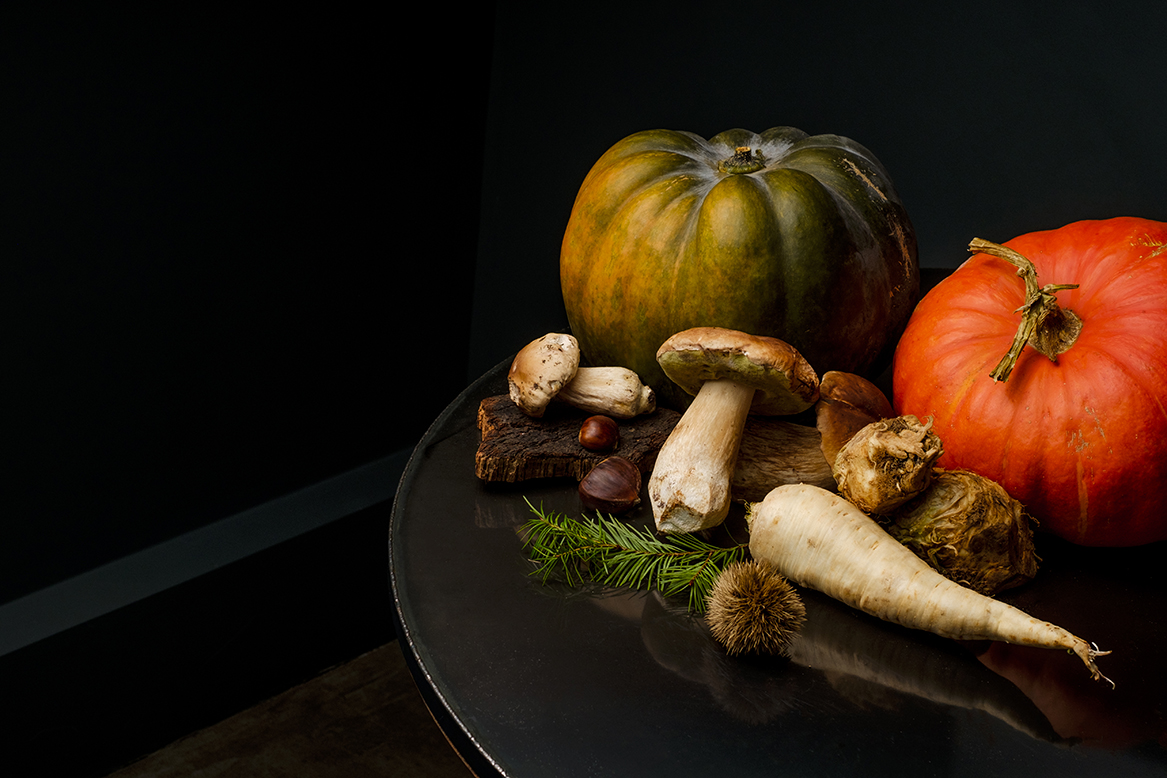
David Toutain © Yves Thibault
A VERITABLE COMPASS ON THE FRENCH CULINARY LANDSCAPE
Shock therapy for Le Taillevent
A veritable compass on the French culinary landscape, Le Taillevent restaurant–property of the Gardinier brothers, like Le Domaine Les Crayères (a Relais & Châteaux hotel in Reims)– is one of those unshakeable institutions of gastronomy. The shock therapy that Chef Giuliano Sperandio administered, since he arrived, to this former mansion of the Duc de Morny (dating from 1852) was probably just what the doctor ordered to bring this Parisian establishment back to its former glory. Now the dishes stand to attention: emphatic renditions of game, truffle, lobster, turbot and other prestigious ingredients while keeping one eye on the rearview mirror: traditional dishes such as Taillevent langoustine boudin or blue lobster with shiitake, peppercorn sauce and coffee-infused mayonnaise are just two examples. But the most remarkable difference of the restaurant’s modern guise is its extension of cookery directly into the dining room. A team led by Baudouin Arnould performs flambéeing and carving, performances in their own right. Regulars remain loyal to the establishment for its subtle mingling of cuisine and service, not to mention the exceptional wine cellar which lends an overall harmony and inspires an extraordinary sentiment: that this classic institution is keeping pace with the times.
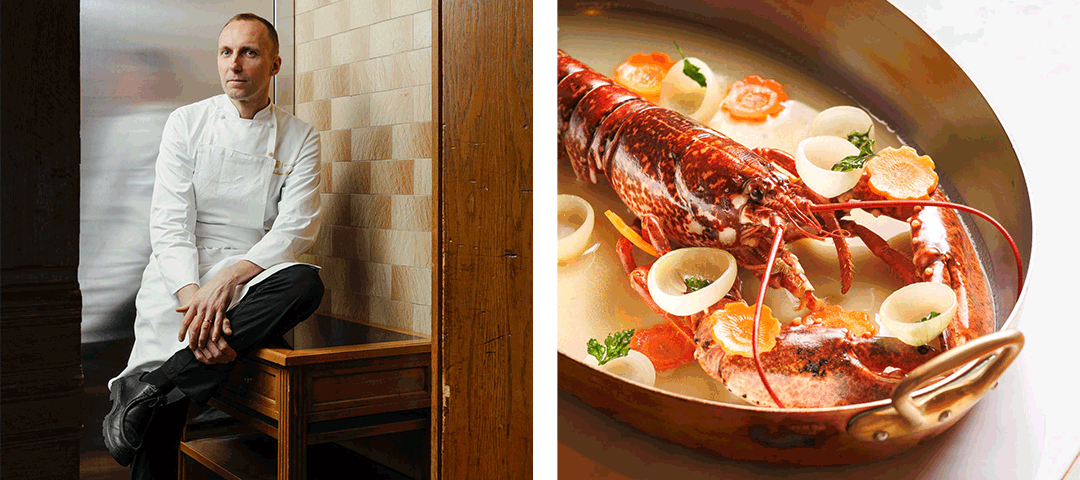
Le Taillevent © Mickaël Bandassak
Frédéric Anton: delayed daring
When you are at the helm of two très Parisien establishments like Le Pré Catelan (with three stars in the Michelin Guide) and Le Jules Verne (with one star), the temptation is to avoid making too many waves, sticking to a classic roadmap, avoiding detours. “That’s what I thought at first,” says Frédéric Anton. “When I arrived at Le Pré Catelan 26 years ago, I didn’t dare twitch a muscle and wanted to live up to the expectations of a very Parisian, traditional clientele. Then, as the years went by, I realized I needed to embrace risk. That’s when I started coloring outside the lines. Recently, for instance, I served an asparagus burger with various sauces. It took social media by storm! At Le Jules Verne, I approached the same ingredient with greater caution, serving it in the form of asparagus tips, an asparagus flan, and a flavorful onion mousse.” Chef Anton, whose Le Pré Catelan mandate was just renewed for 18 years, is dressing up the new menu at a second eatery on the site, La Ferme du Pré Catelan.
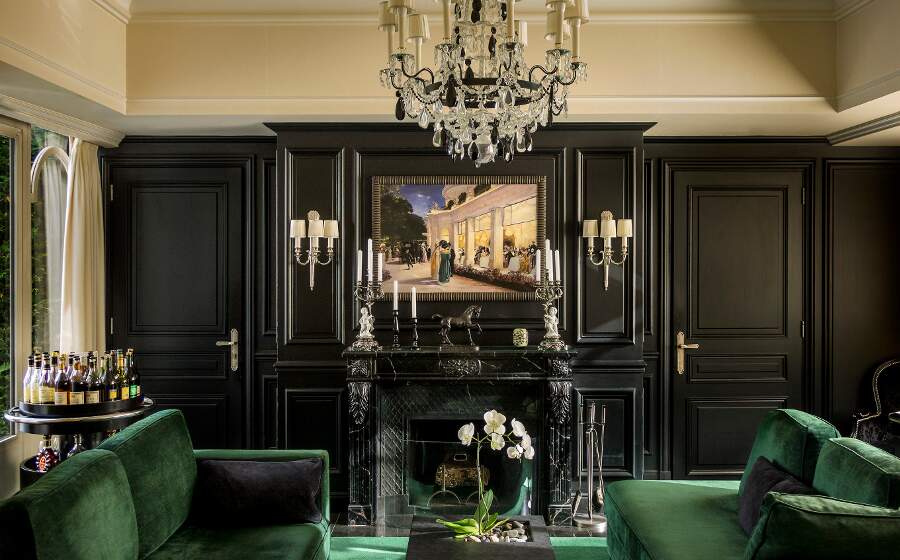
La Ferme du Pré Catelan
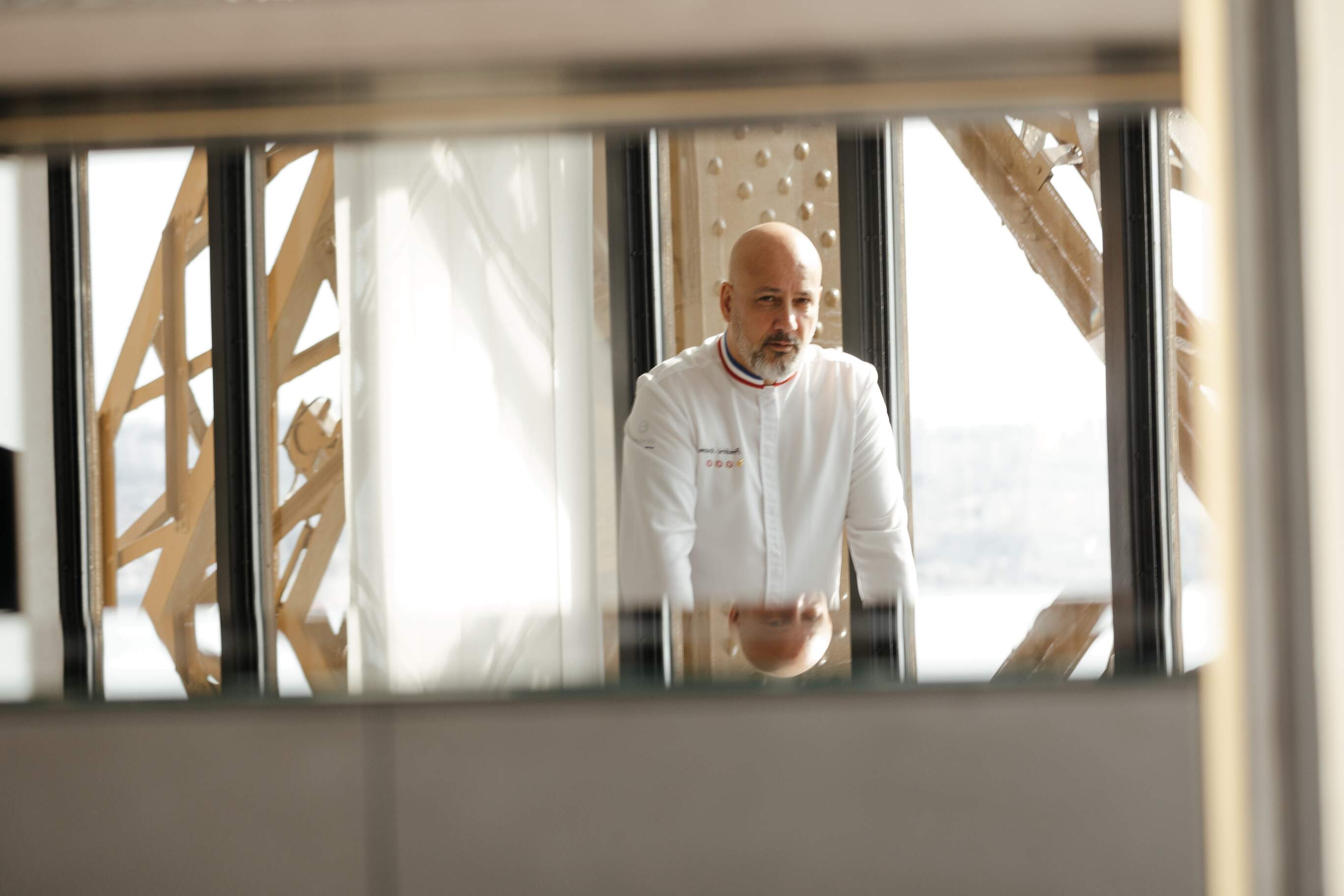
Le Jules Verne © Mickaël Bandassak
LA SCÈNE IS A STAGE THAT JUGGLES CONTRADICTIONS OF SIMPLICITY, SOPHISTICATION AND INTENSITY.
La Scène: a modern-day Mère
From either the Élysée Palace and the Champs Élysées, one need only take a few steps to reach a gleaming golden lair: the culinary temple of Stéphanie Le Quellec, the latest luminary to take the gastronomic stage by storm. She earned her stars at Le Prince de Galles and boosted her fame with a few televised stints. But ‘desacralizing’ haute cuisine, her mission, has its risks. Because, though some take refuge there, shaking off gastronomy’s shackles takes cheek and, above all, serious culinary chops. From her open kitchen, Chef Le Quellec sends out compositions swinging between her husband’s native Brittany and the beloved Provence of her childhood. If she has freed herself of the repertoire’s fetters, it’s undoubtedly to get closer to the ingredients, like her abalone/tripe/ caviar triptych. La Scène must also be understood as the work of a close-knit team, from the pastry by Pierre Chirac to the service by Joseph Desserprix (Restaurant Manager, and Meilleur Ouvrier de France 2022, recognizing his contribution to preserving French heritage) and the sommelier-savvy found in Matthias Meynard. La Scène is a stage on which this talented theater troupe juggles the contradictions of sophistication, simplicity and intensity.
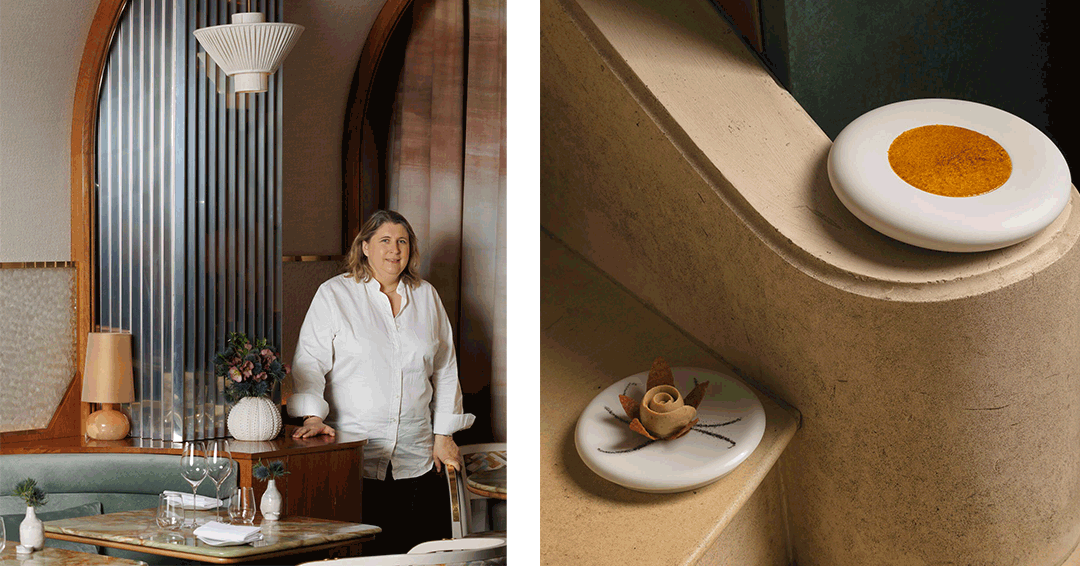
La Scène © Mickaël Bandassak
Pierre Gagnaire: the delights of doubt
When Pierre Gagnaire came to Paris in 1996, he set up shop in an Italian restaurant draped in Scottish fabrics. His entrepreneurial mishap in Saint Étienne–where he earned three Michelin stars and subsequently filed for bankruptcy–made him somewhat of an industry enigma. Yet he needed only a few years to claw back that starry trio and remind the world that strength is often forged through trial by fire. His cuisine sometimes seems mysterious because it springs from doubt. When Chef Gagnaire sees an ingredient (a turbot, a cuttlefish, a pigeon, etc.), he embarks on a multipronged, oft-complex approach to strike the right tone. It is then up to guests to join the dance and find its expression with him. Gagnaire’s art is one of those active, energized cuisines, where the pleasure comes from an off-beat quirk, like the snare drum in a jazz trio. His culinary expression is ceaselessly evolving, founded on his succinct axiom of ‘give and receive’. The tartan décor has long since been vanquished and Argentinian architect Marcelo Joulia has recently sought to give the dining room on Rue Balzac a more poetic, fantastical quality.
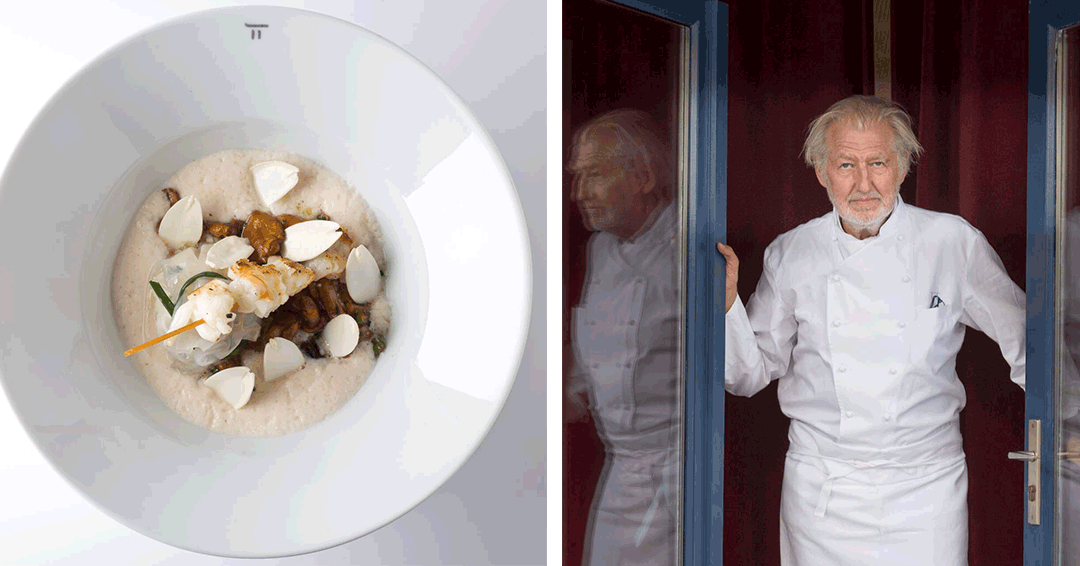
Pierre Gagnaire
Le Grand Véfour: like a rock
This legendary Paris restaurant, established in 1784 as Le Café des Chartes, has made a vocation of withstanding the test of time, of demonstrating centuries-long survival. The name change to Le Grand Véfour was simply because Jean Véfour purchased the place in 1820. But it wasn’t until 1948 when Raymond Oliver arrived that the restaurant truly took off: as France’s first real TV chef he combined character and charisma. Still, the restaurant and its purple banquettes had already left their mark on history. All the great names in France had at one time eaten there, their visits commemorated by unobtrusive copper plaques: Napoleon Bonaparte and Joséphine, Victor Hugo, Balzac, Colette, Jean Cocteau, Sacha Guitry and André Malraux. More recently, after having plucked his stars from the Michelin galaxy, Chef Guy Martin was well aware that times were changing and knew he had to adapt. He did so in May 2021, introducing a broad terrace beneath the aristocratic arches–Le Café des Chartes was reborn. The kitchens accommodated this change by serving not only various breakfast options, but very affordable menus, with an ever-present gourmet touch. One thing, however, has not changed, part of Le Grand Véfour’s irresistible charm: midday light filtering through the frosted glass.
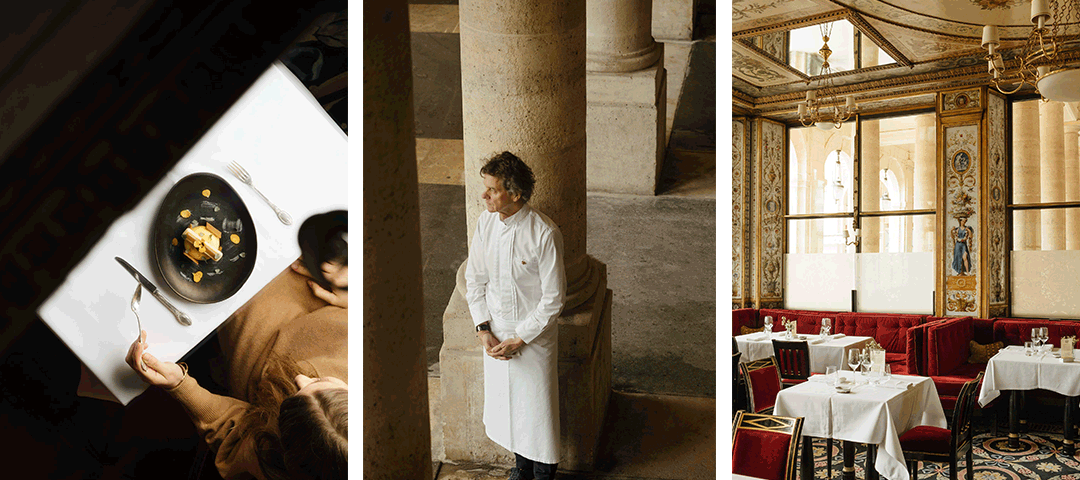
Le Grand Véfour © Mickaël Bandassak



